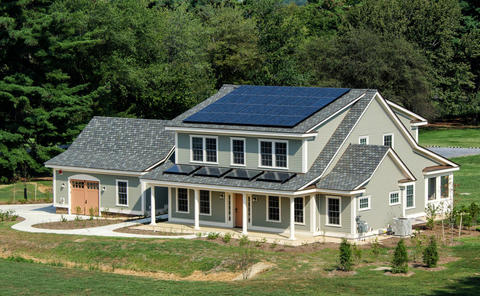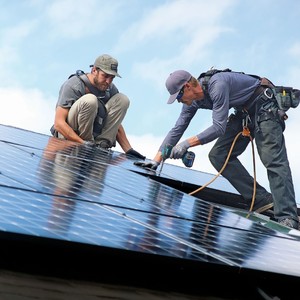
This post was written by Paul Bodnar, Douglass Sims, and Rhian-Mari Thomas and originally published by the Rocky Mountain Institute.
While the attention of the world is on a rapid and sustainable Covid recovery, increasing climate change risks continue to loom large. Recovery will require investments that create jobs and ensure not only immediate green recovery, but also long-term sustainable development. We need ready solutions that promote local development of climate-resilient infrastructure and utilize capital and innovation from the private sector to advance public objectives. We need green banks: an implementable, versatile answer for sustainable economic recovery.
Many countries are on their way to making this solution a reality. Green banks are most often publicly owned, commercially operated, specialized financing institutions or facilities that act as focal points for scaling up domestic investment in climate-friendly, sustainable projects. The recently launched State of Green Banks 2020 report, the first comprehensive survey, aggregation, and analysis of global green bank activity, found that a growing number of countries worldwide are exploring green banks.
Twenty-seven green banks already exist in 12 countries and another 25 jurisdictions are actively exploring the model, to implement nationally determined contributions, catalyze local green markets, and create jobs. Existing green banks have shown an impressive track record to date, investing nearly $25 billion of their own capital since their respective inceptions and supporting projects with a total value of $70 billion as of mid-2020.
More than $45 billion (or 64%) of this sum came from the private sector. Though existing green banks are predominantly situated in high-income countries, the green bank model is by no means limited to developed nations. Emerging green banks are located in 25 countries across income levels and geographies around the world.
Green banks need support to grow
However, survey respondents confirm that this budding ecosystem will need support to flourish. An overwhelming majority of emerging green banks indicated they will need support from multilateral and bilateral organizations for initial capital. Notable barriers to green bank establishment include lack of embedded technical expertise and difficulties in accessing outside technical assistance.
An initiative dedicated to helping countries overcome these roadblocks, the Green Bank Design Platform, is currently under development. The Platform, a collaboration between the Green Finance Institute, the Natural Resources Defense Council, and Rocky Mountain Institute, intends to help countries navigate the entire process and provide, coordinate, or facilitate access to an array of services that target specific barriers to green bank establishment.
These include providing knowledge products, securing funding and technical assistance for market assessments, assisting with capital recruitment, and advising on institutional design.
Deploying capital into local low-carbon and sustainable development solutions is paramount for ensuring sustainable Covid recovery as well as for curbing emissions before 2050. For recovery, green banks can help channel and leverage fiscal resources to investments that provide near-term relief (e.g., through construction jobs) and long-term prosperity (e.g., by lowering energy costs and spurring new industries). For climate, Climate Policy Initiative estimates that between $1.6 and $3.8 trillion will be required every year through 2050 for supply-side energy generation only—compared to $546 billion actually deployed globally in 2018.
Green banks can help to fill this gap as trusted local partners that attract new and varied pools of capital. By serving as focal points for climate finance within a country, they can tap into both domestic and international sources of capital: from pension and sovereign wealth funds to multilateral development banks and climate funds.
In addition, green banks can flexibly address market gaps by deploying a wide range of financial instruments including guarantees, long-term debt, equity, subordinated debt, warehousing and securitization, and others. Simultaneously, green bank investments in unproven technologies or underserved communities often serve as market demonstrators, thus removing barriers to green investment.
Green banks are also an answer to a burning question in climate diplomacy: how can developing nations chart their own course to a zero-carbon future instead of relying on developed country funding? By centering climate finance in a domestic institution, green banks create a powerful vehicle for blending concessional support from sources such as the Green Climate Fund, non-concessional instruments from development finance institutions, and co-investment from the private sector.
Green banks create jobs
Importantly, green banks can be critical conduits for green recovery and job creation. By supporting the development of green sectors and attracting private investment into climate-resilient projects, green banks support the health of the broader economy. For example, the UK Green Investment Bank, founded in the aftermath of the 2008 economic crisis, nearly tripled investment in UK green infrastructure within three years of establishment and made the UK the largest offshore wind market in the world within five years.
Following on this success, the UK Chancellor recently announced the creation of the new National Infrastructure Bank (NIB). The role of the NIB will be to support the financing of the National Infrastructure Strategy, which Prime Minister Boris Johnson has stated reflects the UK Government’s environmental agenda.
In addition, a recently published report exploring the potential of a federal green bank in the United States found that it could create over 5 million new job-years within five years of establishment: over 3.3 million direct and 2.2 million indirect. In Mongolia, the Green Climate Fund approved funding for the Mongolia Green Finance Corporation this November. In India, Tata Cleantech Capital Limited executives report that renewable energy has been one of the most resilient sectors of the economy during the pandemic.
Developed nations can catalyze green banks
Developed nations could help provide the needed support for global green bank development. Collaboratively, they could spur green bank establishment worldwide by directing development finance institutions, multilateral development banks, and climate funds that they support to:
- Establish a dedicated fund or otherwise contribute capital to green finance institutions in developing countries.
- Alleviate technical assistance barriers by embedding expert personnel into new green banks.
- Provide grant funding to help in the due diligence and project preparation phases of creating a green bank.
- Support the establishment of the Green Bank Design Platform.
We have in front of us an implementable, practical, proven solution that can drive forward answers to two major challenges we face: a post-Covid recession and climate change. In this critical moment and in the run-up to COP26, we must take leadership and act decisively to ensure a sustainable future; if we take action to support their growth, green banks can show us the way.
-Paul Bodnar is managing director of Global Climate Finance at the Rocky Mountain Institute. Douglass Sims is the director and senior advisor of the Green Finance Center at the Natural Resources Defense Council. Rhian-Mari Thomas is the CEO of the Green Finance Institute.
Weekly Newsletter
Get building science and energy efficiency advice, plus special offers, in your inbox.














One Comment
Regenerative agriculture is needed in the US and everywhere else. If Green Banks can help facilitate this I am ready to invest.
Log in or create an account to post a comment.
Sign up Log in